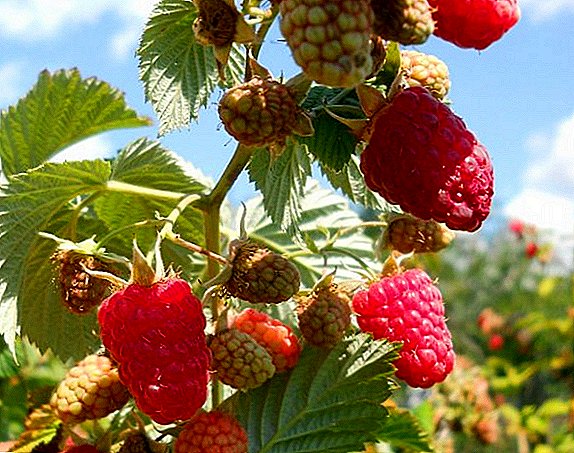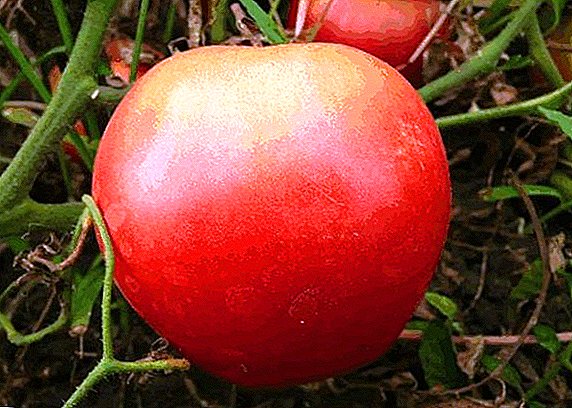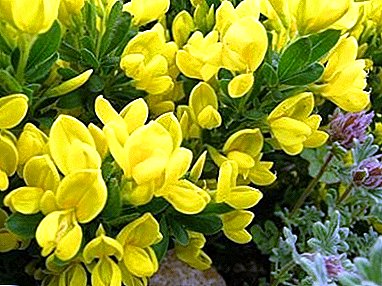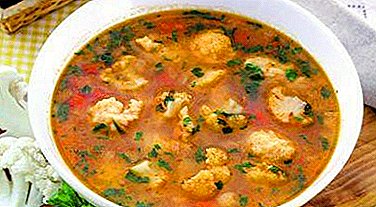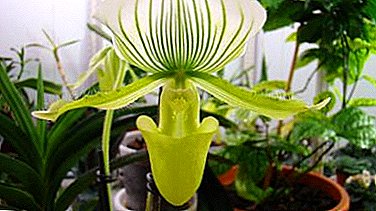
Many farmers decide to start their business with growing turkeys. Such a bird has tasty meat and eggs, besides it also has a soft fluff. Often use not adults, but small turkey poults.
When a person has a small herd, many people think about how to continue reproduction. In this article, you will learn how to incubate turkey eggs, as well as be able to learn more about the features of this process.
What is it and what are the features?
 Incubation is the process of maintaining the natural conditions for maintaining the life of the embryo.. It is carried out with the help of an incubator - this is a special equipment in which eggs are placed for further maturation (how to make an incubator with your own hands, this article says).
Incubation is the process of maintaining the natural conditions for maintaining the life of the embryo.. It is carried out with the help of an incubator - this is a special equipment in which eggs are placed for further maturation (how to make an incubator with your own hands, this article says).
Experts say that the maximum shelf life of eggs is 10 days from the moment they are laid. If the time is increased, hatchability will not be as good. It is important to create the most comfortable conditions for incubation, so that individuals grow up healthy and strong.
Selection and storage
IMPORTANT: The room where the eggs are stored must have a special device for measuring temperature and humidity. It is important that the data on it were reliable.
If the ventilated area is good, the chickens will be healthy.. Note that the egg shell is delicate and thin - it easily absorbs odors. But do not allow drafts - the movement of air can affect the evaporation of moisture, which is so necessary for eggs.
Maintaining the right level of humidity is a very important task. If the level is low, the eggs will dry out, and if high, the condensate that appears will contribute to their destruction. In rooms where the air is very dry, you need to arrange tanks with warm water.
This is due to the fact that there is a process of decay. He is getting stronger with increasing temperature, fats begin to break up in the yolk, and the protein becomes very liquid. All of these changes can lead to tissue deformation at the cellular level.
Training
When the required number of eggs for incubation will be collected, you need to clear them of debris and heat to room temperature. Also, do not be superfluous to conduct disinfection. After all these procedures, you can safely put the eggs in the incubator.
Disinfection
 Eggs for subsequent incubation must be disinfected.. This treatment will reduce the waste of the product and save babies from becoming infected. An adult bird can be sick without any symptoms, and it will be impossible to recognize the ailment.
Eggs for subsequent incubation must be disinfected.. This treatment will reduce the waste of the product and save babies from becoming infected. An adult bird can be sick without any symptoms, and it will be impossible to recognize the ailment.
Pathogens will be excreted with the droppings. If the shell is dirty, then the turkey can die. For poultry, helminthiasis is particularly dangerous.
The best solution for disinfection will be treatment with potassium permanganate.. The recommended treatment with formaldehyde vapors is unsafe for humans; moreover, if the eggs are very dirty, it will be useless.
Do I need to wash?
The question of whether to wash an egg before incubation is controversial. Some poultry do not recommend this, because the hatch rate will be reduced. There is no exact answer to such a question, since all farmers conduct their experiments on this matter.
If you do not want to put dirty eggs in the incubator, you can try to clean them with sandpaper. But this should be done very carefully.
Turkey products can be washed in a formalin solution at a temperature of 32 degrees or in a weak solution of potassium permanganate. Eggs need to be put on the grid, and then immerse them in the solution and remove all the dirt.
TIPA: After that, you should not wipe each product separately, as you can break the protective layer.
Stages of development
There are 4 stages of development, each of which will be discussed further.
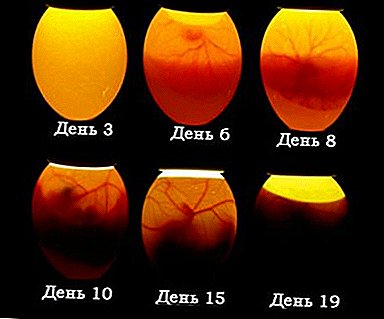 The first period - from the first to the eighth day. Bookmark need to hold a blunt end up. At this stage, the incubation temperature should be 38 degrees. It will provide uniform heating.
The first period - from the first to the eighth day. Bookmark need to hold a blunt end up. At this stage, the incubation temperature should be 38 degrees. It will provide uniform heating.Pay attention to the fact that the eggs must be turned 6 times a day - this way you eliminate the adherence of the embryo to the shell.
On the 8th day, screening is performed, which makes it possible to weed out specimens, which cannot give good results. It is important that the embryo's silhouette and its circulatory system are visible. There are cases of unintentional damage to the shell, but fix it all is not so difficult. You just need to seal the crack with scotch tape or plaster.
- The second period lasts from 9 to 14 day. The temperature of incubation remains unchanged, and the humidity should be at the level of 50%. Do not forget about the need to turn the eggs.
On the 14th day, ovoscopy is performed in order to assess the development of the embryo.
- The third period is from 15 to 25 days. The temperature in the incubator should be 37.5 degrees, and the humidity at 65%. Since at this moment the embryos emit heat, they must be cooled.
The degree of cooling is very simple to determine - you need to bring the egg to the eyelid. It should not be too hot or cold.
You need to turn the eggs 4 times a day until 25 days, after which you need to stop. Ovoscopy during this period should show that the boundary of the air chamber has become more tortuous and mobile, and the hatching egg is dark. This confirms the fact that there is a living germ inside.
- Fourth incubation period - 26-28 days. At this time, the chicks hatch. In no case can not rotate and cool the eggs. The output will be 75%, depending on the quality and breed.
When it comes to naklev, the temperature should be at around 37 degrees, and the humidity should be at 70%. In the second half, the conclusion begins, which ends on the 28th day. The first sample will be 70% of the eggs in the incubator, after which you will need to slightly cover the holes and raise the temperature to 37 degrees.
What if the electricity is turned off at the last stage? In this case, you must have a generator. If the level of lighting and humidity drops sharply, the poults will die.
Timing
The incubation period for turkey eggs is approximately 29 days.
Mode
At home, with the help of an incubator you can breed the poults at any time.. You will only have to observe the temperature conditions and conditions necessary for the eggs.
Table incubation turkey eggs at home:
| Incubation period | Temperature readings | Ventilation barrier |
| 1-5 | 38 | Is closed |
| 6-12 | 38 | 15 minutes |
| 13-25 | 38 | 15 minutes |
| 26 | 37,5 | 20 minutes |
| 27 | 37,5 | Is open |
| 28 | 37 | Is open |
Bookmark
In a bowl of clean water, dip the eggs. If they sink to the bottom on the side, it means that they are very fresh. If they remain on the surface, they should be thrown away. Bookmark spend on the side.
- Features incubation of eggs of peacocks.
- How to incubate quail eggs?
- What is the incubation of musk duck eggs and how to produce it?
- Nuances of incubation of guinea fowl eggs.
- A detailed algorithm for incubating ostrich eggs.
- Rules for incubating pheasant eggs.
- Step-by-step process of incubation of eggs of indoutki.
- The subtleties of incubation of duck eggs.
- How is goose eggs incubated?
Translucent
 Ovoscoping or scanning can determine the freshness of each egg.. Ovoskop industrial production can check several eggs at once. But you can also do it yourself.
Ovoscoping or scanning can determine the freshness of each egg.. Ovoskop industrial production can check several eggs at once. But you can also do it yourself.
Yolk should be centered and do not have clear contours. And as for the air chamber, it should be located at the blunt end of the egg.
Errors
Typical errors include such:
- Overheating eggs.
- Underheating.
- Low humidity.
- High humidity.
- Not enough turns.
Post hatching
During the hatching process and for 24 hours, do not open the incubator. Let the poults dry well and only then transfer them to the brooder. They need to be fed 6 times a day, and food must be balanced - eggs can be mixed with mixed feed. Also do not forget about drinkers. In the first days they will drink a lot.
Conclusion
Summing up it is worth noting that the incubation of turkey eggs is actually a very simple process that requires a bit of free time and care. By adhering to the information presented above, you will be able to leave small turkey poults.


 The first period - from the first to the eighth day. Bookmark need to hold a blunt end up. At this stage, the incubation temperature should be 38 degrees. It will provide uniform heating.
The first period - from the first to the eighth day. Bookmark need to hold a blunt end up. At this stage, the incubation temperature should be 38 degrees. It will provide uniform heating.